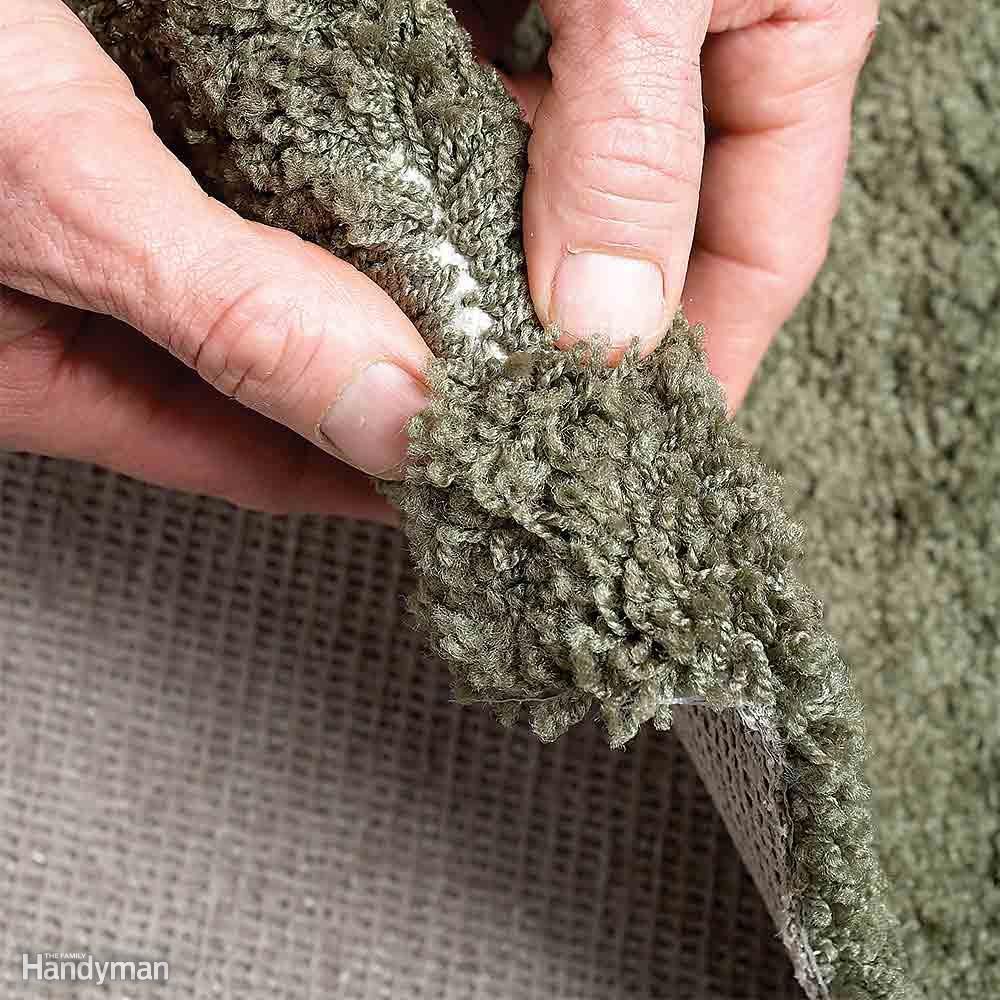
The Sign of a Quality Carpet
One way to determine the quality of carpet is to check the density by bending the carpet sample backward. If you can see the backing easily, it's a low-density, lower-quality carpet that will crush more easily.
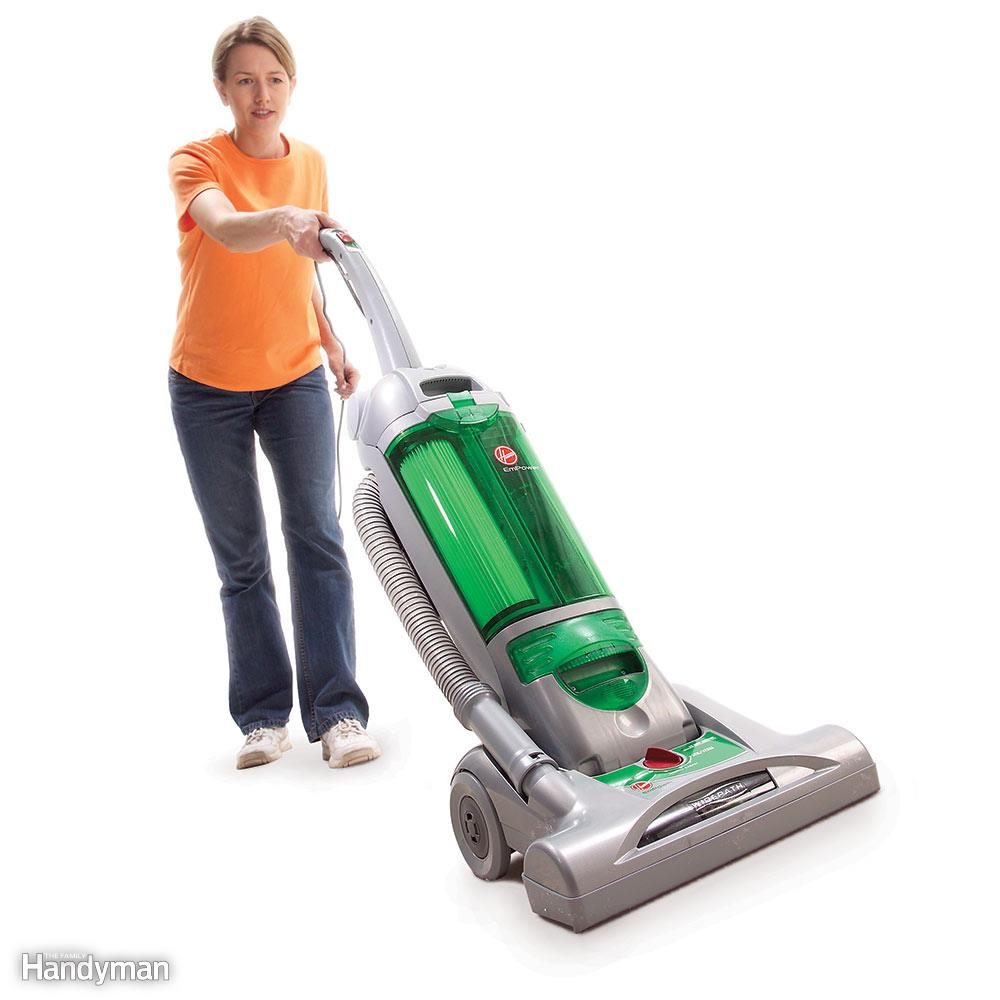
Use the Vacuum Correctly
Cleaning is the best way to maximize the life of your carpet and delay the heavy cost of replacement. Vacuum entrance areas and high-traffic areas twice a week and the rest of the carpeting at least weekly.
For the best results, set the height right. Raise it to its highest setting, turn it on and lower it until you can feel the vacuum trying to tug itself forward. Go slowly. It's OK to make one quick pass over low-traffic areas, but make two slow passes over high-traffic areas. And, start with a clean filter. A dirty bag or filter reduces your vacuum's cleaning power. Replace filters on bagless vacuums every three months. Replace vacuum bags when they're three-quarters full.
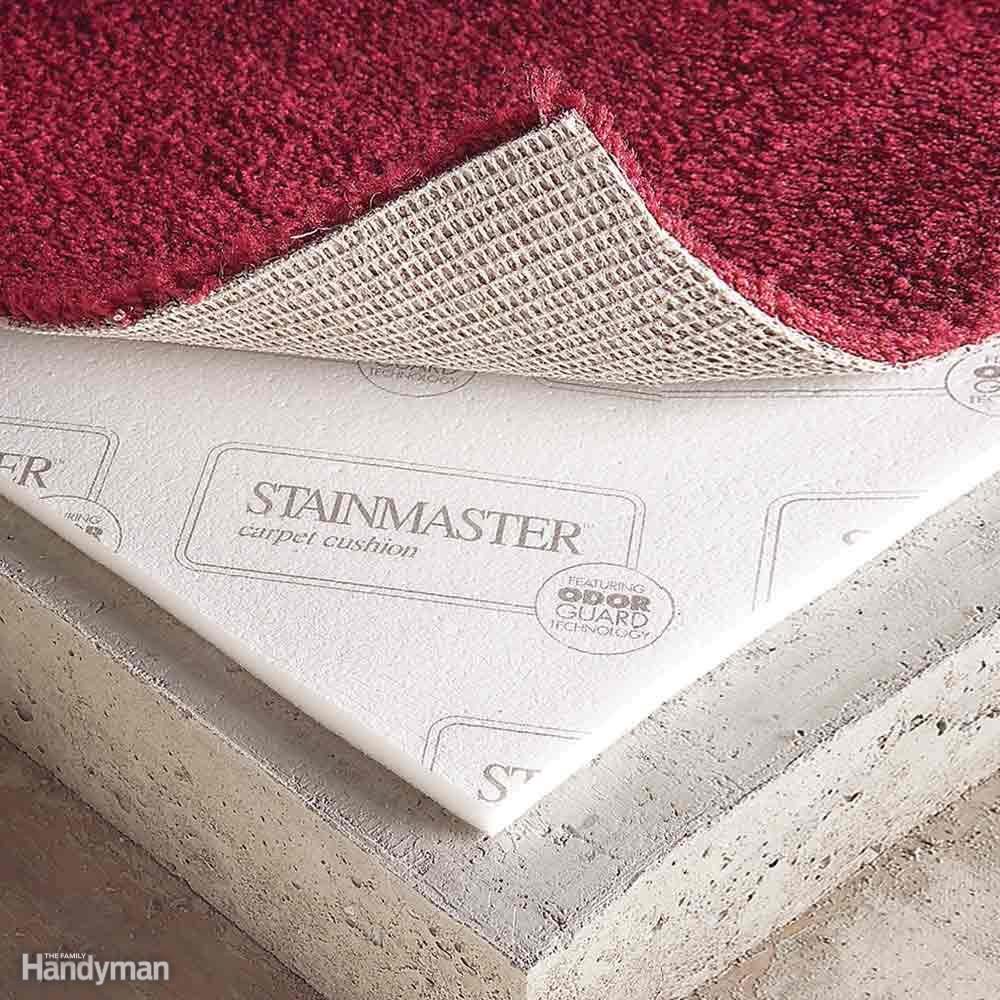
Buy the Right Carpet Pad
The right pad will extend the life of your carpet, and the wrong pad can cut the life of your carpet in half. The quality of carpet pad is determined by density, not thickness. A good-quality pad will be 3/8 to 1/2 in. thick and have a density/weight rating of at least 6 lbs. (the residential standard). In most cases, cheap, low-density pad will only last a few years before it needs to be replaced. For high-traffic areas, get a thinner pad with a density of 8 lbs. or more.
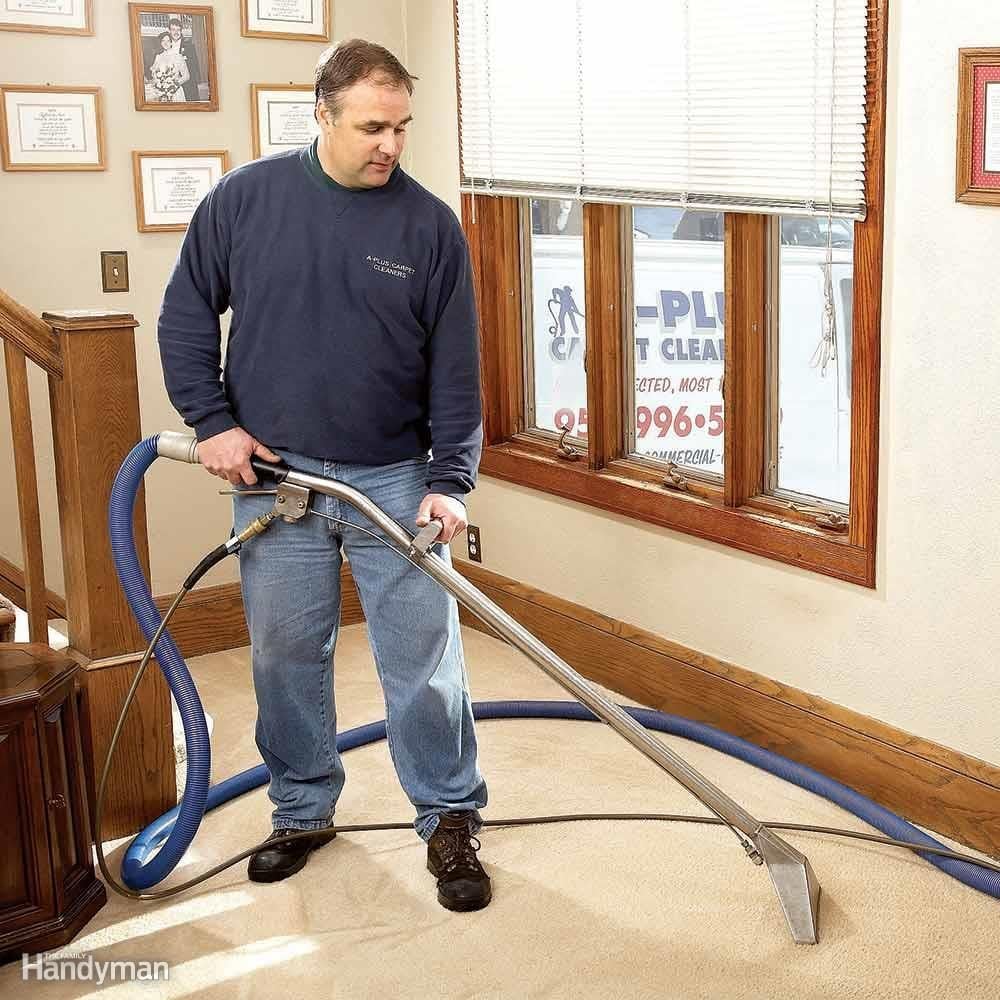
Hiring a Pro Carpet Cleaner
Most carpet manufacturers recommend professional hot-water extraction as the primary cleaning method for synthetic carpets. The best strategy is to hire a professional every year or two and clean the carpet yourself between pro cleanings. Here are some hiring tips:
- Hire a pro who uses truck-mounted equipment rather than portable steam cleaning equipment. Truck-mounted equipment exhausts the dirty air and humidity outside. Its stronger suction leaves carpets drier, too.
- Ask for a high-pressure rinse. This agitates the pile and neutralizes the carpet's pH.
- Ask the pro to set furniture on blocks or pads after cleaning. This prevents stains from transferring from furniture legs to the damp carpet.
- Be sure the estimate includes everything—such as furniture moving, vacuuming (some charge extra for this), routine spot removal, preconditioning and deodorizing as part of a standard cleaning package.
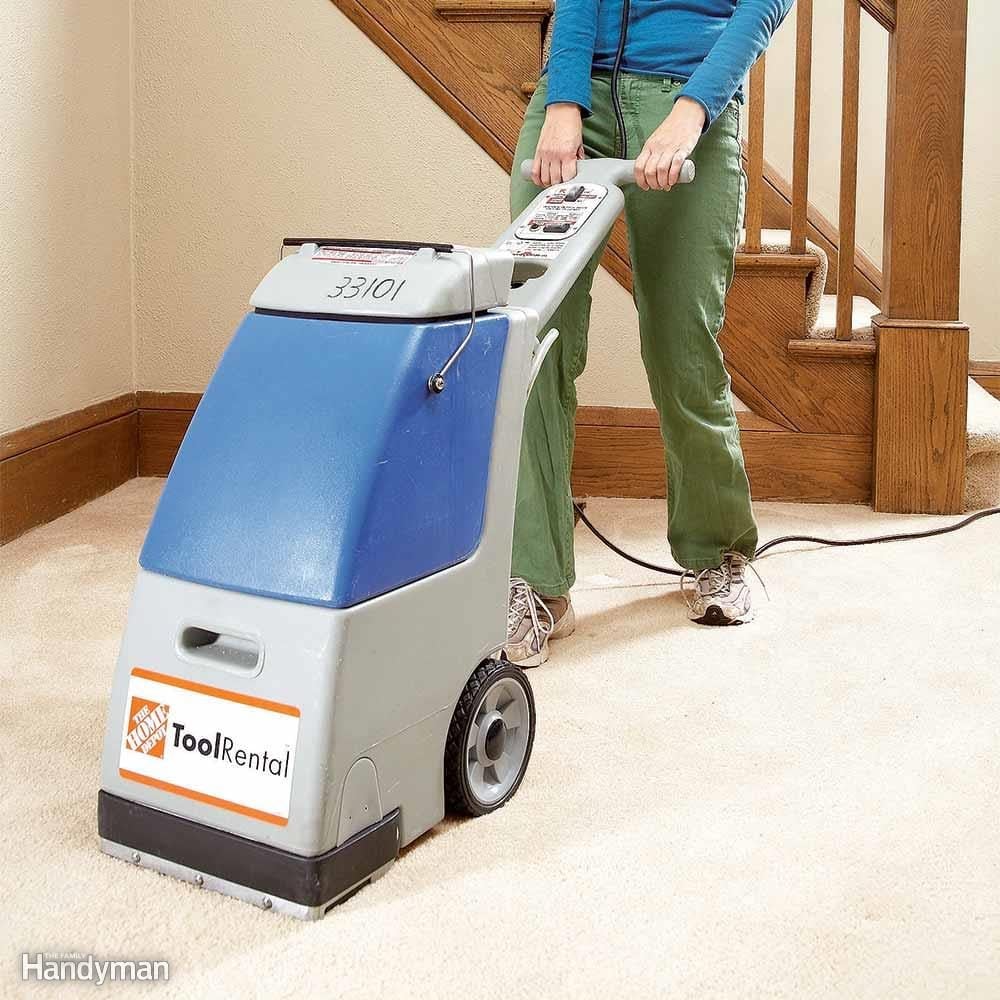
Using Rented Carpet Cleaning Equipment
Rented carpet cleaning equipment just can't do what pro gear and know-how can do. So a good strategy is to alternate between pro cleaning and DIY cleaning. Here are some ways to get the most from rented equipment:
- Clean the carpet before it becomes really dirty. If you wait until the carpet is filthy, cleaning it will be much more difficult, take much longer and cost more.
- Vacuum well before and after cleaning. Vacuum beforehand to remove large particles of soil. Vacuum again after you clean and the carpet is completely dry to pick up soil that wicks to the surface during drying.
- Pretreat stains and high-traffic areas. Mix a drop of detergent with hot water in a spray bottle and lightly mist the dirtiest areas. Let sit 10 minutes before the general cleaning.
- Use less soap than directed. The soap used in rented machines foams a lot and leaves behind a lot of residue, which acts as a dirt magnet. Use a tablespoon or less of soap to 1 gallon of hot water to prevent soap residue.
- Use a mild acid rinse. You can buy a neutralizing rinse where you rent the cleaning machine, or you can make your own using 1 cup of white vinegar to 1 gallon of hot water. Rinse after you make one pass with the detergent solution.
- Don't overwet the carpet. Rented machines put a lot of moisture into the carpet, and most don't have enough suction to extract it thoroughly. Make only one pass with the soap-and-water solution. Make one pass with the neutralizing rinse. Then make three drying passes with the water switched off.
- Let it dry thoroughly. After you clean your carpets, open the windows, use fans and a dehumidifier, or put the AC on a moderate setting (72 to 78 degrees) to remove excess moisture from the air. Don't replace the furniture or walk on the carpet until it's completely dry. This can take up to 12 hours, though six to eight hours is typical.
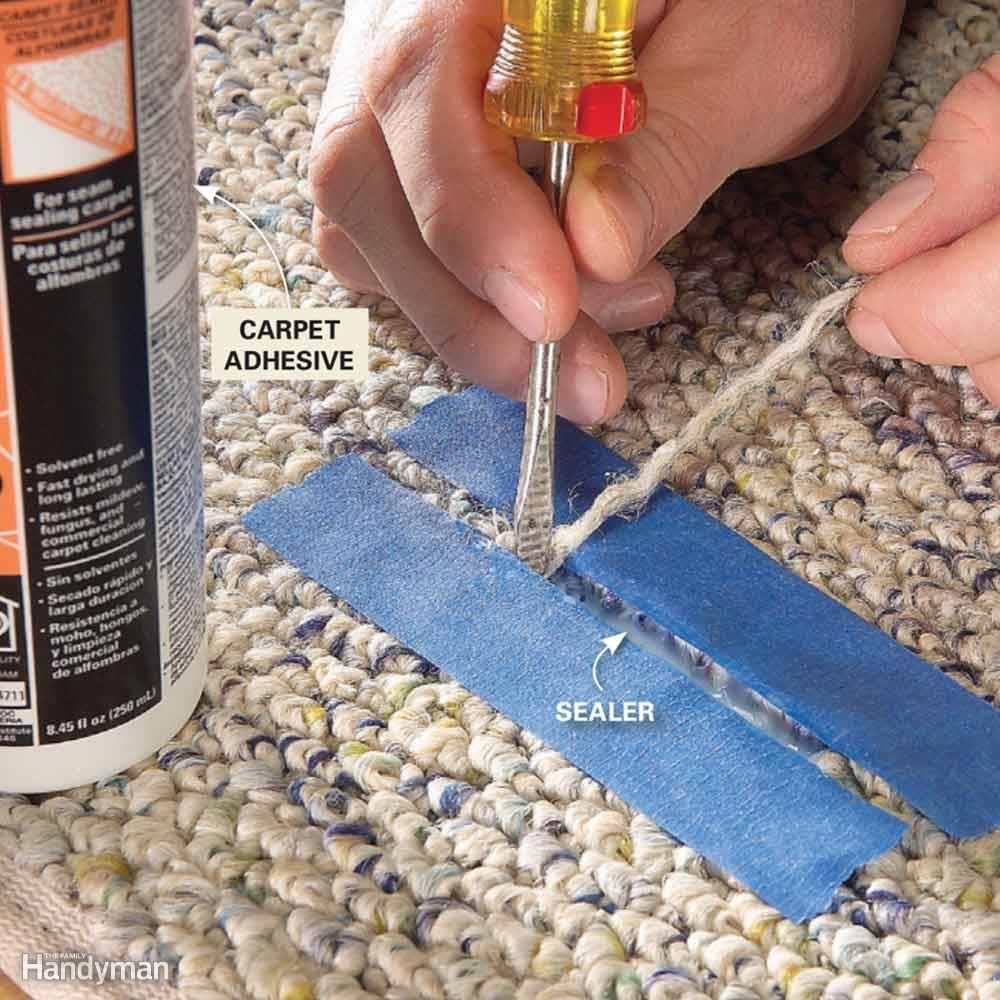
Hide Carpet Runs
If you have a running snag in carpet with woven loops, don't worry. You can make a repair so perfect that it will be invisible to everyone but you. All it takes is scissors, a small screwdriver, tape and some carpet adhesive, which is available at home centers.
Gently tug the loose yarn to find the point where it's still firmly attached to the backing. Snip it off as close to the backing as possible.
Protect nearby carpet with tape and apply a bead of carpet adhesive into the run. Use a screwdriver to press each “scab”—spots where bits of backing cling to the yarn—into the adhesive.
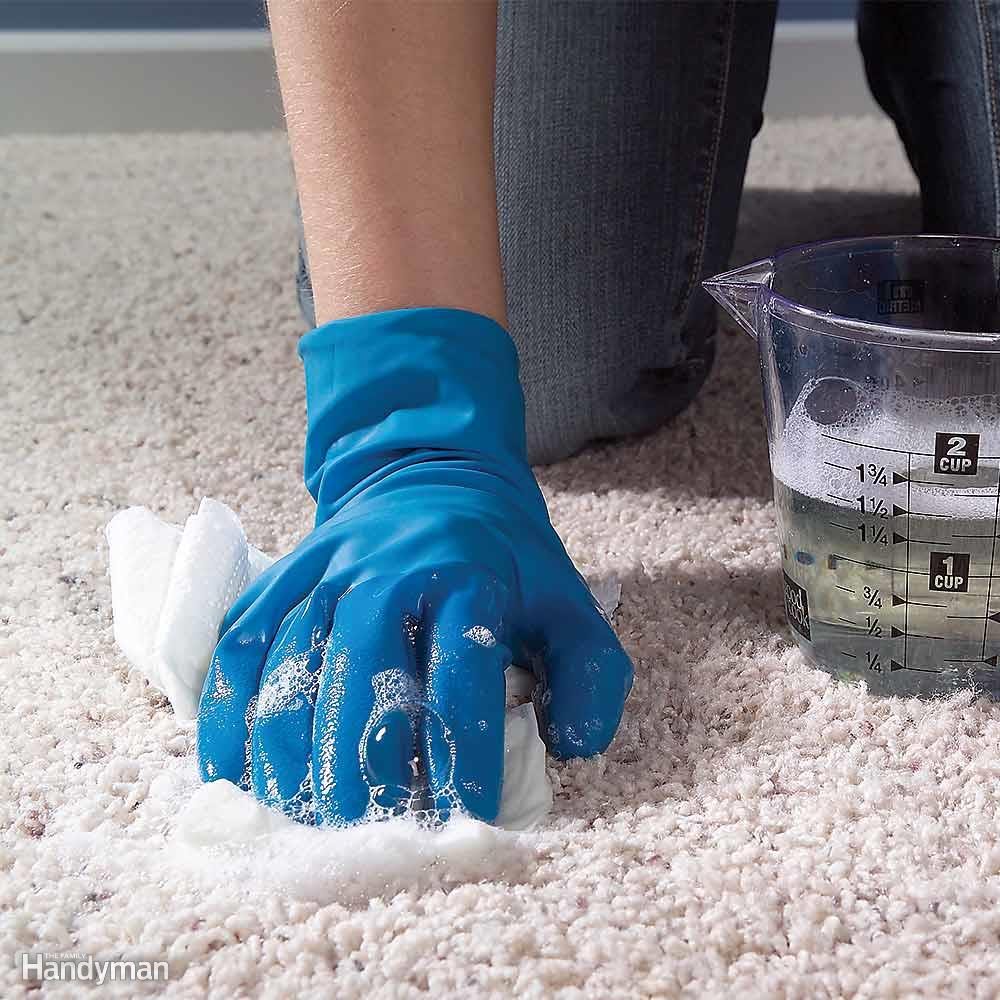
Clean Up Pet Accidents
If your pet has an accident on the carpet, act fast. Urine can damage fibers and even change the color of carpet.
First, soak up the urine with white paper towels. Printed patterns can bleed color into the carpet. Press hard to soak up as much as possible. Then add about a quarter-teaspoon of dishwashing liquid to a cup of lukewarm water. (Don't use the detergent you use with your dishwasher.)
Next, apply the soapy water. Soak the area thoroughly with paper towels. Then blot the area with dry paper towels and repeat this wet-and- dry process at least once. Follow up with clear water to rinse out the detergent and blot the carpet dry again.
Finally, apply one part white vinegar mixed with two parts water and blot the carpet one last time. Cover the damp area with about 20 layers of paper towels and a heavy stack of books. Change the towels again and again until they no longer absorb moisture.
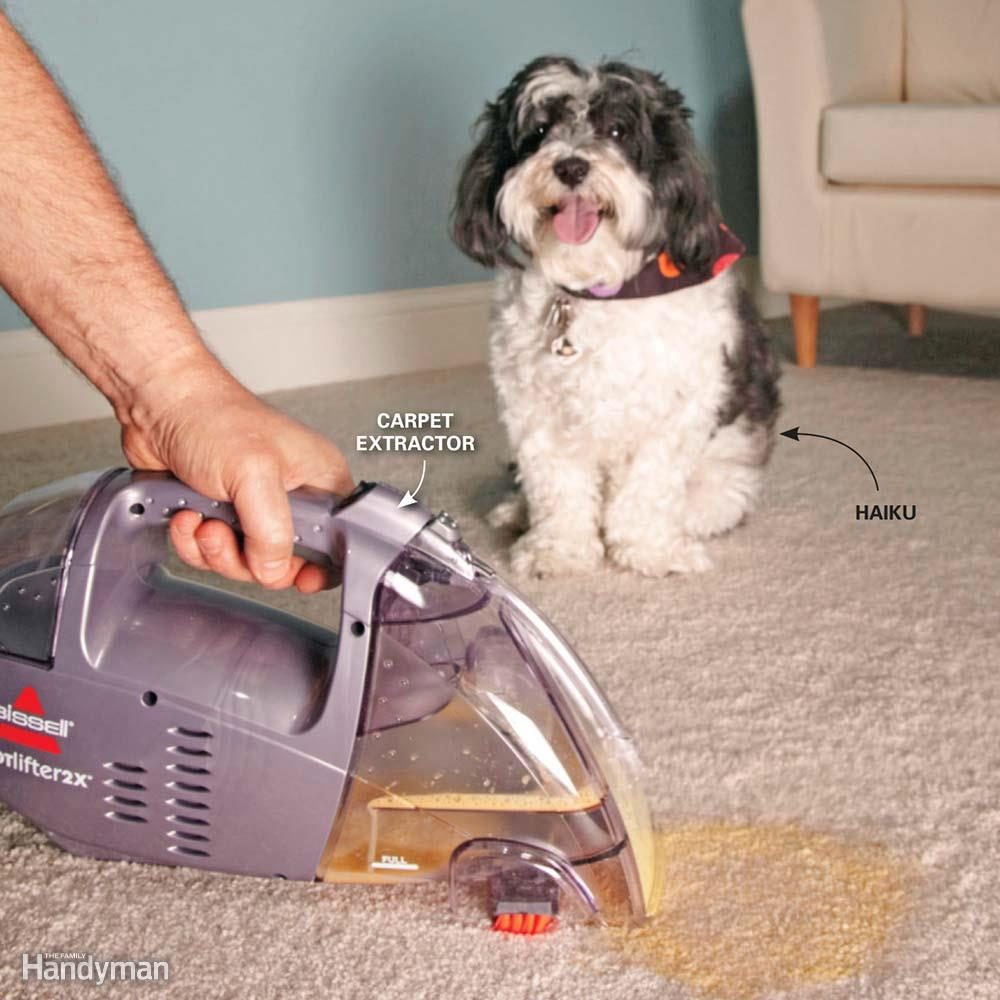
A Tool for Frequent Pet Accidents
If your pet has frequent accidents on the carpet, buy a “carpet extractor,” a small handheld vacuum designed to suck liquids out of carpets.

Get a Water-Absorbent Mat
To protect your carpet, place a water-absorbent mat inside your door for wet or snow-covered shoes and boots. Or you can make this attractive boot tray.
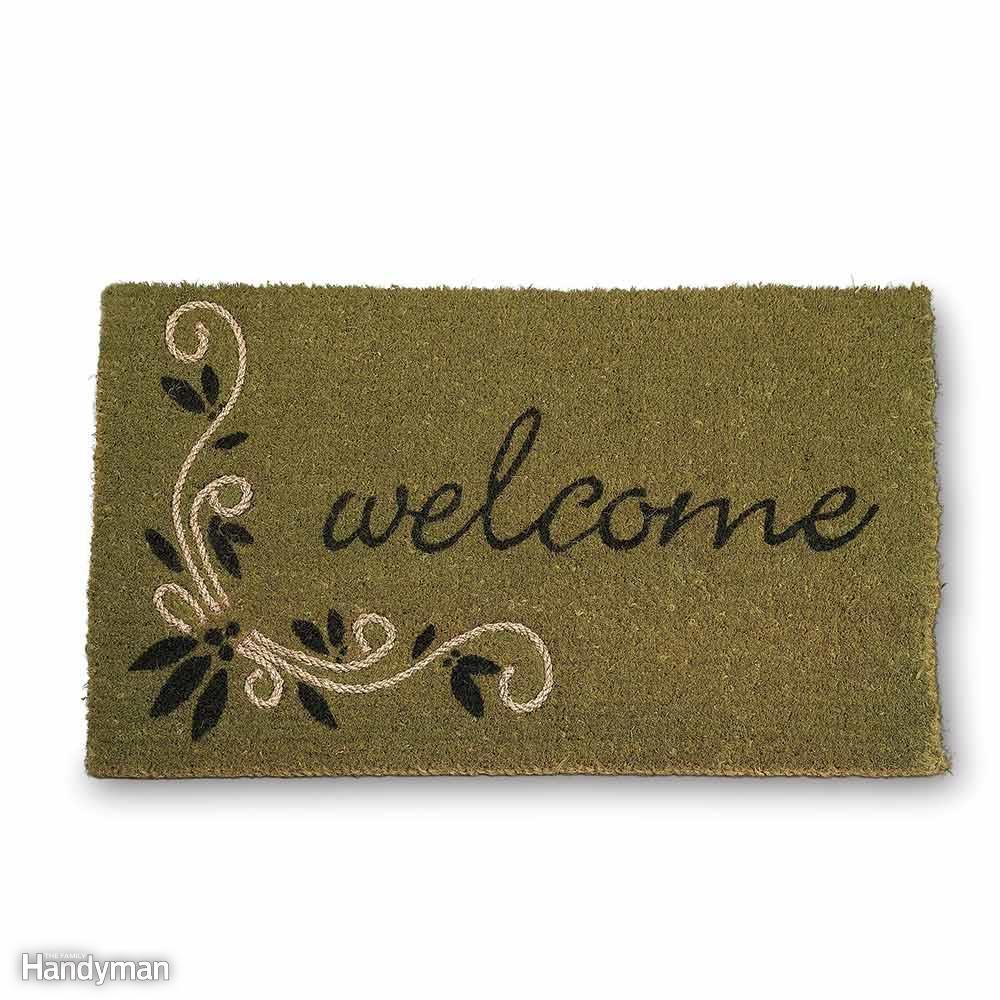
Keep a Coarse Doormat Outside the Door
Place a coarse-textured mat outside your door to remove soil. Eighty-five percent of the dirt in a home is carried in on shoes! A doormat helps to prevent that. Also, encourage everyone to take off their shoes when inside the house.
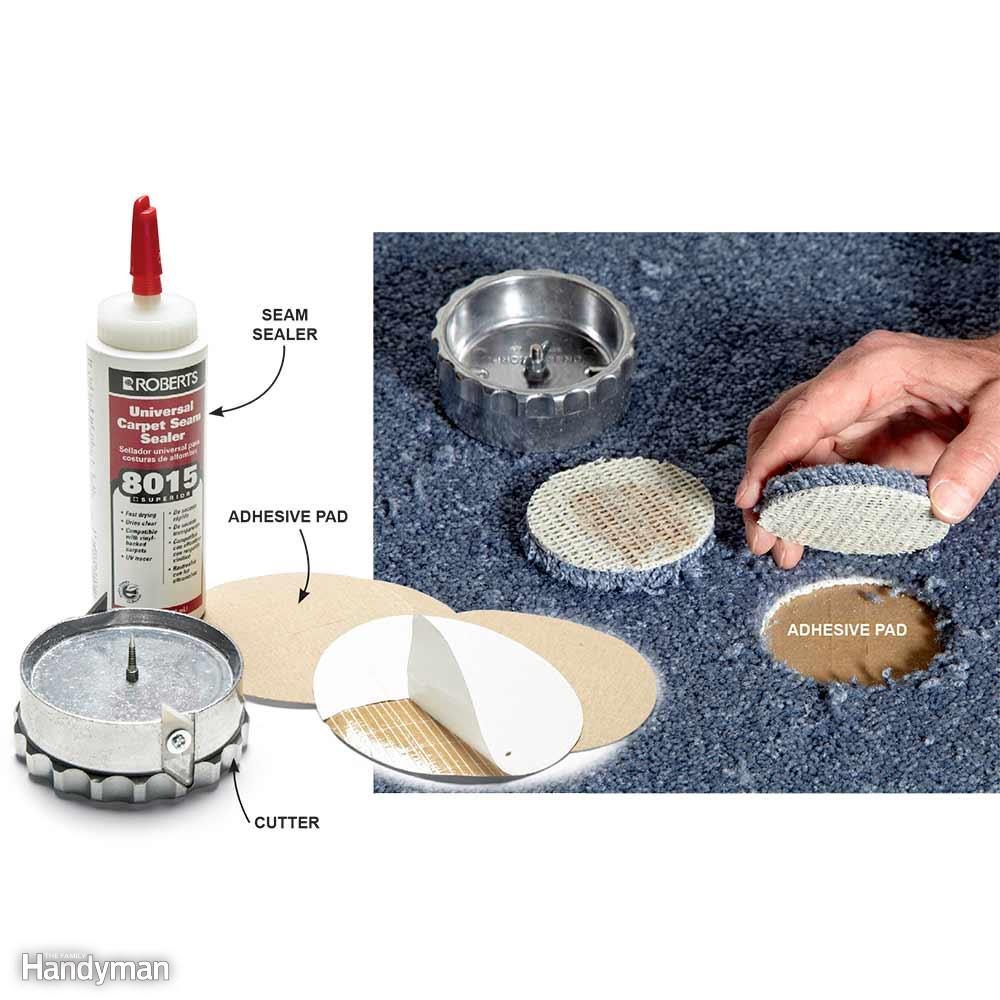
Cut Out Stains and Burns
If your carpet has a burn or stain, you don't have to live with it. You can use a “cookie cutter” to cut out the damaged spot and replace it with a patch cut from a remnant, closet or under the sofa. It's surprisingly easy. With some types of carpet, the patch is visible, but not very noticeable. With others, the repair is almost impossible to see. Buy a carpet repair kit online, at amazon.com.